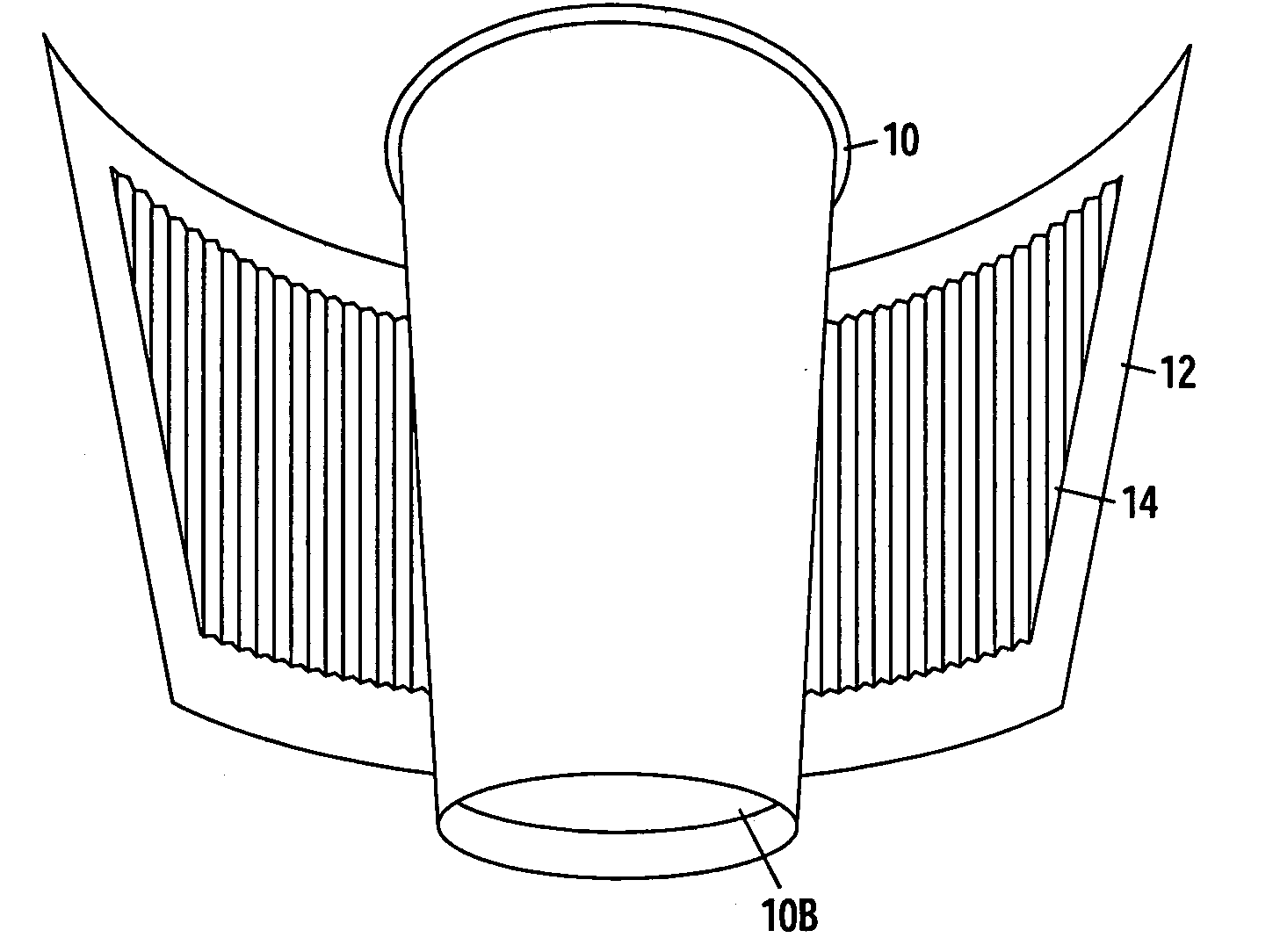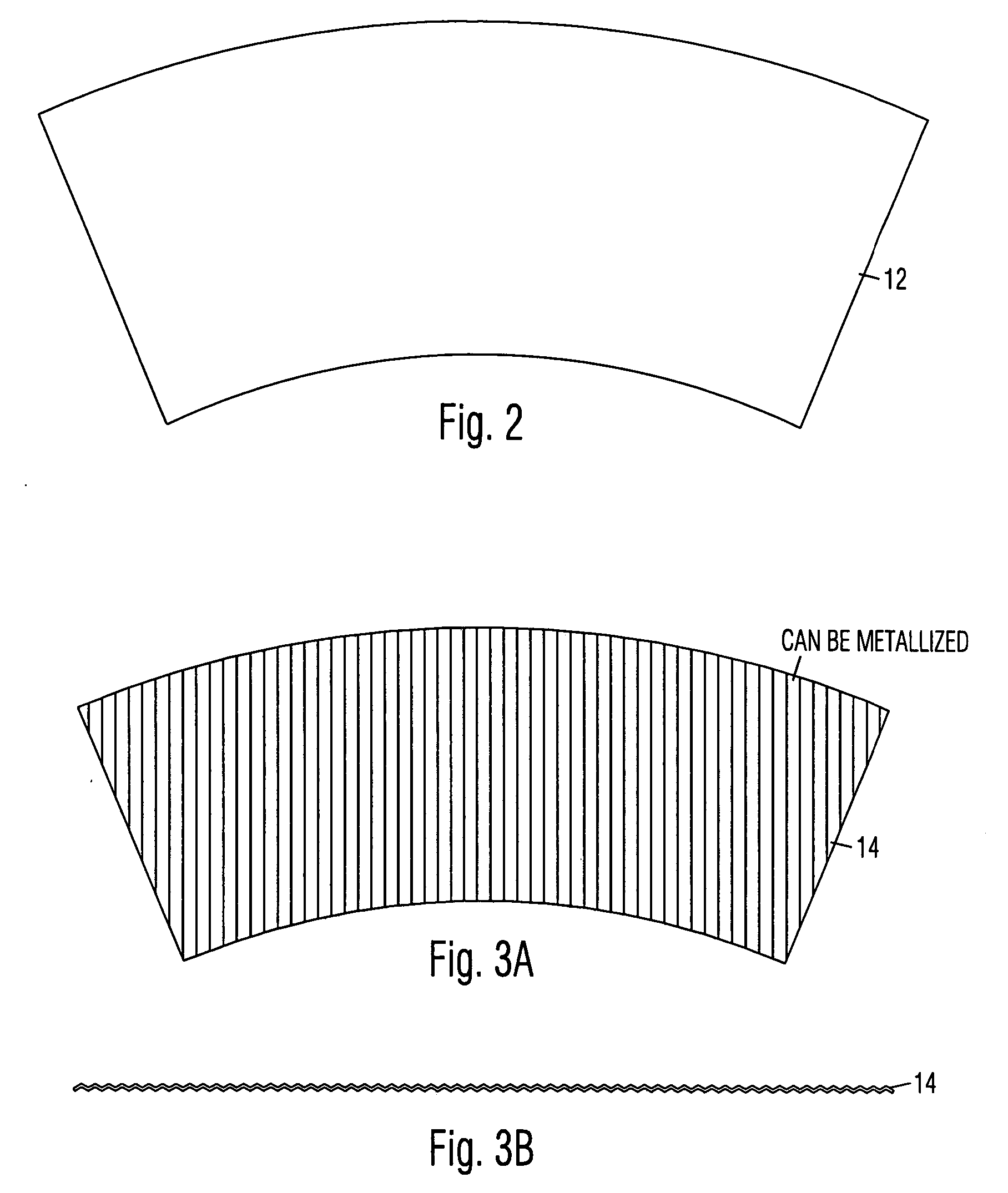Insulating cup wrapper and insulated container formed with wrapper
a technology of insulating cups and wrappers, which is applied in the field of insulating cups and containers, can solve the problems of slow and costly off-line printing process, unsatisfactory features, and inability to meet the needs of consumers,
- Summary
- Abstract
- Description
- Claims
- Application Information
AI Technical Summary
Benefits of technology
Problems solved by technology
Method used
Image
Examples
Embodiment Construction
—FIG. 1—PRIOR-ART CUP
[0027]FIG. 1 shows a view from below of a prior-art paper or plastic cup. The cup comprises a sidewall 10 an upper rim 10R, and a bottom 10B, and is made of a single wall of plastic or plastic-coated paper. As a result it has poor insulating qualities. Thus if it contains a hot beverage (not shown) the heat will pass through the cup and heat or burn the fingers of anyone who holds it. The cup could be made of an insulating material, such expanded polystyrene (EPS), a foam like thick material, but EPS cups are generally considered environmentally deleterious because they are not biodegradable and thus their use has been banned in some areas. Also manufacturers find it difficult to print trademarks and other messages on them. The cup can be doubled, but this is an expensive and wasteful practice. A cup sleeve could be slid over the cup, but this requires additional labor, time, storage, and inventory management, and sleeves have a tendency to fall off of the cups,...
PUM
 Login to View More
Login to View More Abstract
Description
Claims
Application Information
 Login to View More
Login to View More - R&D
- Intellectual Property
- Life Sciences
- Materials
- Tech Scout
- Unparalleled Data Quality
- Higher Quality Content
- 60% Fewer Hallucinations
Browse by: Latest US Patents, China's latest patents, Technical Efficacy Thesaurus, Application Domain, Technology Topic, Popular Technical Reports.
© 2025 PatSnap. All rights reserved.Legal|Privacy policy|Modern Slavery Act Transparency Statement|Sitemap|About US| Contact US: help@patsnap.com



